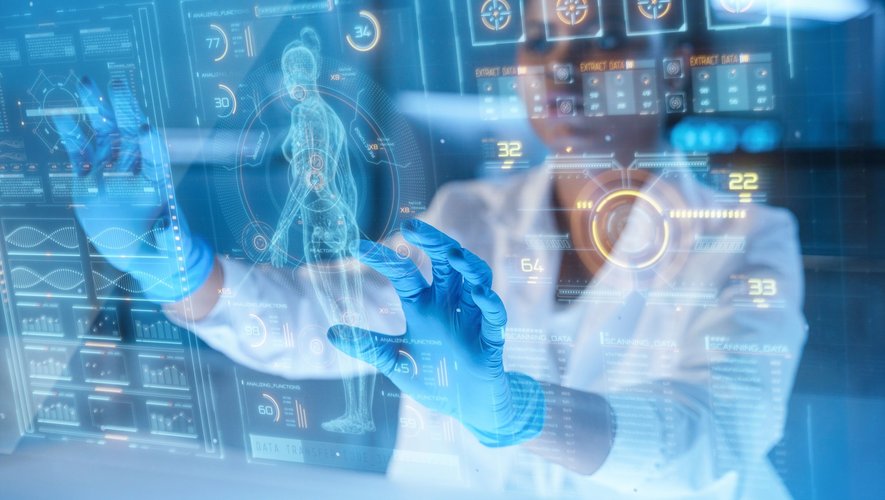(AFP) – Artificial intelligence has already proven that it can be useful for analyzing medical imaging, and it has even shown that it can successfully pass medical student exams.
Now it’s the turn of a new AI-based tool to demonstrate its ability to read the reports drawn up by doctors and accurately anticipate the risks of death, readmission to hospital and other possible complications.
Created by a team from the Langone Faculty of Medicine in New York, the Grossman School of Medicine, the software is now being tested in several partner hospitals of the university, with the aim of making it a future common practice in the medical community.
A study on its possible interest was published Wednesday in the scientific journal Nature.
Its main author, Eric Oermann, a neurosurgeon and computer engineer from the New York School of Medicine, explains that while non-AI-based predictive models have been around for quite a while, they are little used in practice because they require a heavy data entry and formatting work.
But there is “one thing that is common to medicine everywhere, it is that doctors take notes on what they see, what they talk about with patients”, he notes in an interview with the AFP.
“So our basic idea was to know if we could start from medical notes as a source of data, and build predictive models from them,” he continues.
The predictive model, named NYUTron, was formed from millions of medical observations from the records of 387,000 patients treated between January 2011 and May 2020 in hospitals affiliated with New York University.
These observations included the doctors’ written reports, the notes on the evolution of the patient’s condition, the X-rays and the medical imaging, or even the recommendations given to the patients on their discharge from the hospital, all forming a corpus of 4.1 billion words.
One of the main challenges for the software was to succeed in interpreting the language used by doctors, which varies greatly between professionals, especially in the abbreviations used.
They also tested the tool in real conditions, in particular by training it to analyze reports from a hospital in Manhattan and then comparing the results to those of a hospital in Brooklyn, with different patients.
By looking at what happened to the patients, the researchers were able to measure the number of times the software’s predictions turned out to be correct.
– Not a substitute –
Disturbing conclusion, the NYUTron software identified 95% of patients who died in partner hospitals before being discharged, and 80% of those who were readmitted less than a month after their discharge.
Results that exceeded the predictions of most doctors, just like those of non-AI-based computer models currently in use.
But, to everyone’s surprise, a very experienced doctor, well respected in the medical community, gave predictions “even better than that of the software”, specified Eric Oermann.
The software also successfully predicted 79% of patients’ length of stay in hospital, 87% of cases in which patients were denied reimbursement for care by their insurance, and 89% of cases in which the patient suffered from additional pathologies.
Artificial intelligence will never replace the patient-doctor relationship, says Dr. Oermann. But it may allow “to provide more information (…) to doctors to enable them to make informed decisions”.

